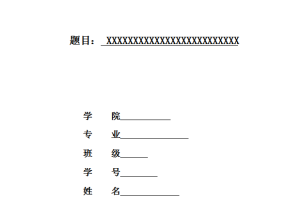随着Internet的迅速发展,网络越来越成为了人们日常生活不可或缺的一部分,而随之引出的网络安全问题也越来越突出,成为人们不得不关注的问题。
为了在一个不安全的网际环境中构造出一个相对安全的环境,保证子网环境下的计算机的安全运行免受到外部的侵害,针对当前的网络问题,本文主要介绍了几种流行的防火墙技术及其工作原理。在防火墙的基本概念、作用和基本类型的基础上,重点分析了linux诸版本中所使用的基于包过滤型防火墙的工作原理,并在此基础上对linux2.4版本出现的iptables技术作了详细的构架环境分析以及实现,以此来测试和部署出一个较为安全的网络环境,使得在一个不安全的网络环境中有效防范外部网络的攻击行为,让整个网络具有较高的安全级别。
关键词: 防火墙、网络安全、Linux、包过滤技术、Iptables
With the rapid development of Internet, the network is more and more become an integral part of People’s daily life, and subsequently leads to the problem of network security that has become increasingly prominent, as people have concerns.
In order to construct a relatively safe environment in a secure environment, to ensure the subnet environment of computer security operation and not infringed by the external, in view of the current network problems, this paper mainly introduces several popular firewall technology and how it works. On the basis of the basic concept, role and basic types behind a firewall, we mainly analys its working principle,which is based on the working principle of packet filter firewall in each version of Linux,and based on that, we analyzed in detail and achieve the structure environment of iptables technology which appears in version 2.4 of Linux,and use it to test and deploy a safer network environment,which will make computers can effectively guard against external network attack behavior in an unsafe network environment, let whole network has a higher level of security.
朗读
显示对应的拉丁字符的拼音
字典
Key Words: firewall、Network Security、Linux、Packet filtering technology、Iptables
第1章 绪论……………………………………………………….. 1
1.1 选题的意义…………………………………………………… 1
1.2 研究内容与论文工作……………………………………………. 1
1.3 论文的组织…………………………………………………… 2
第2章 网络安全概念及常用防火墙技术………………………………….. 3
2.1 计算机网络安全的概念………………………………………….. 3
2.2 计算机防火墙中的常用技术………………………………………. 3
第3章 Linux系统的特点…………………………………………….. 10
第4章 基于linux的网络防火墙技术…………………………………… 12
第5章 linux网络防火墙的架构环境……………………………………. 16
第6章 linux网络防火墙的实验方法……………………………………. 19
第7章 总结及进一步研究……………………………………………. 23
7.1 总结……………………………………………………….. 23
7.2 进一步研究………………………………………………….. 23
参考文献………………………………………………………….. 25





